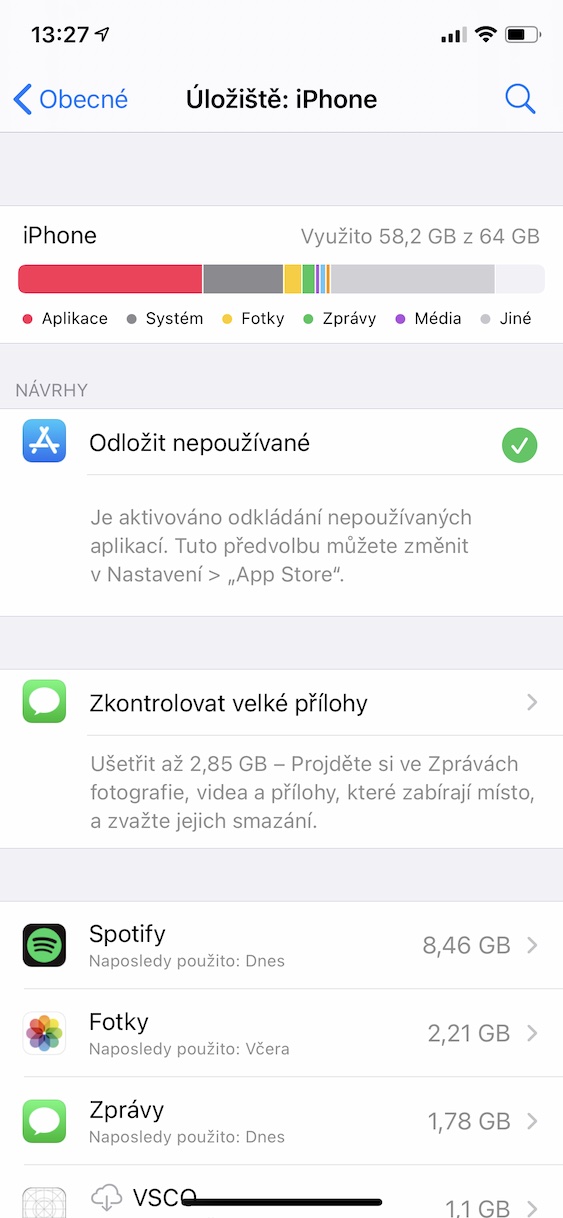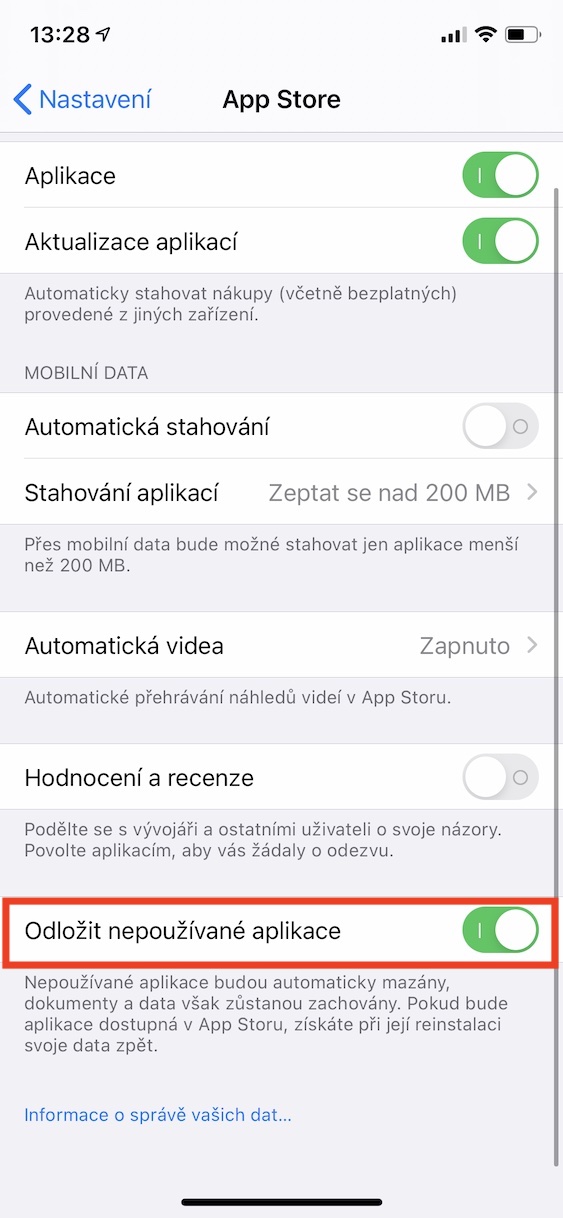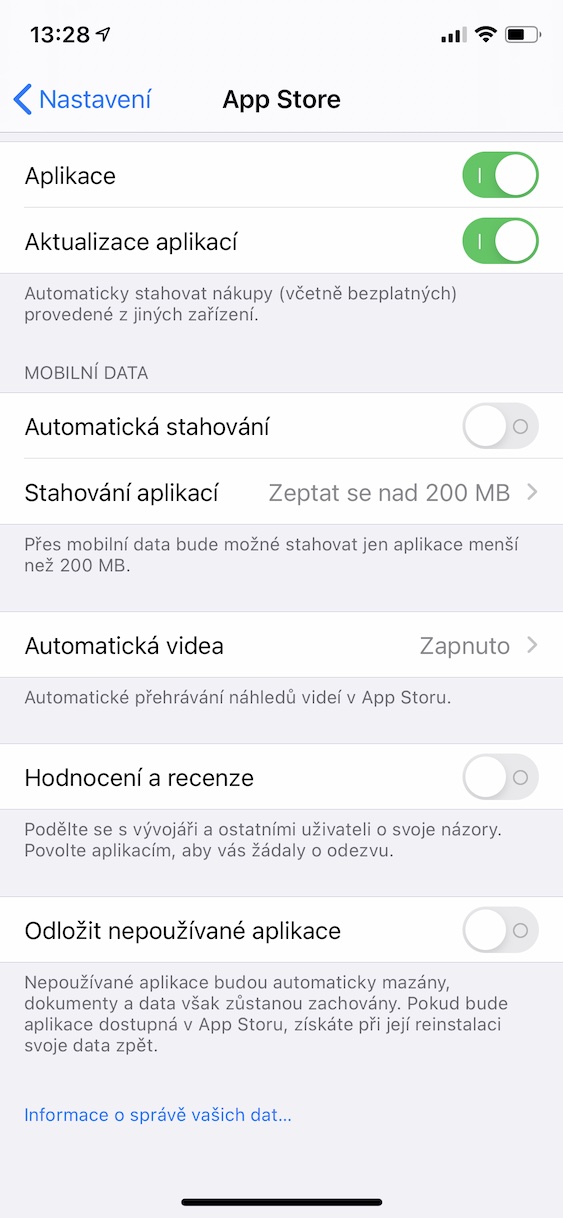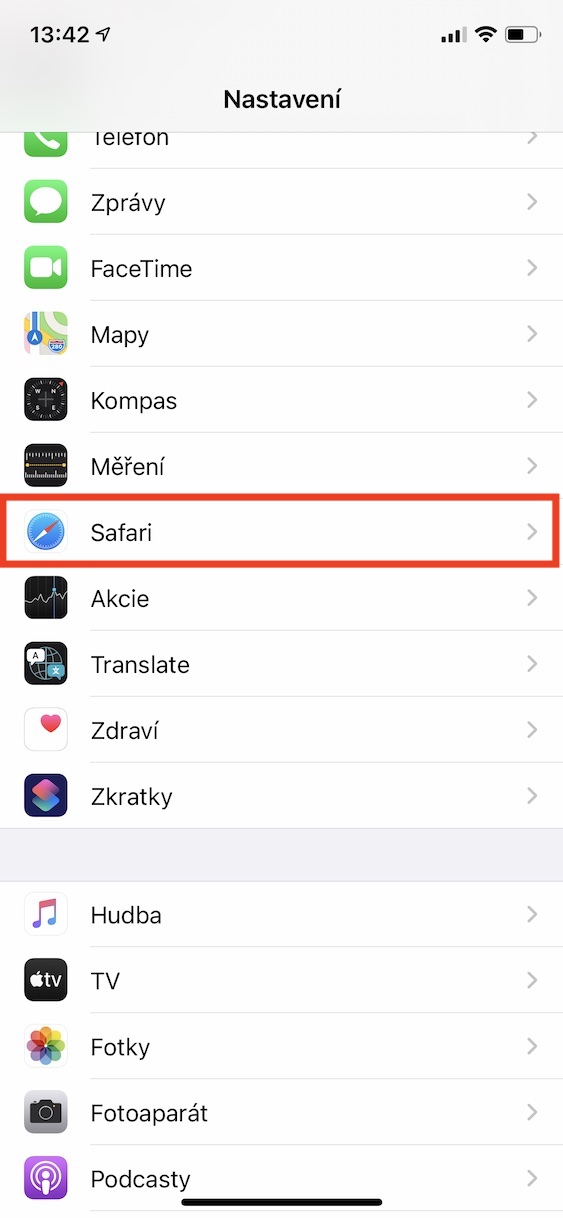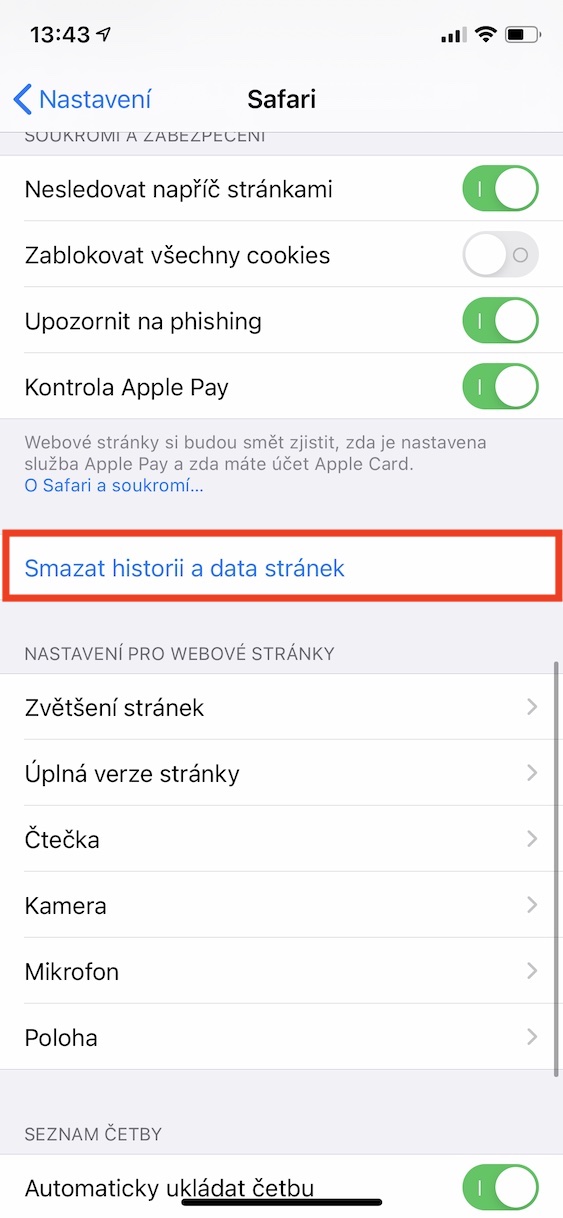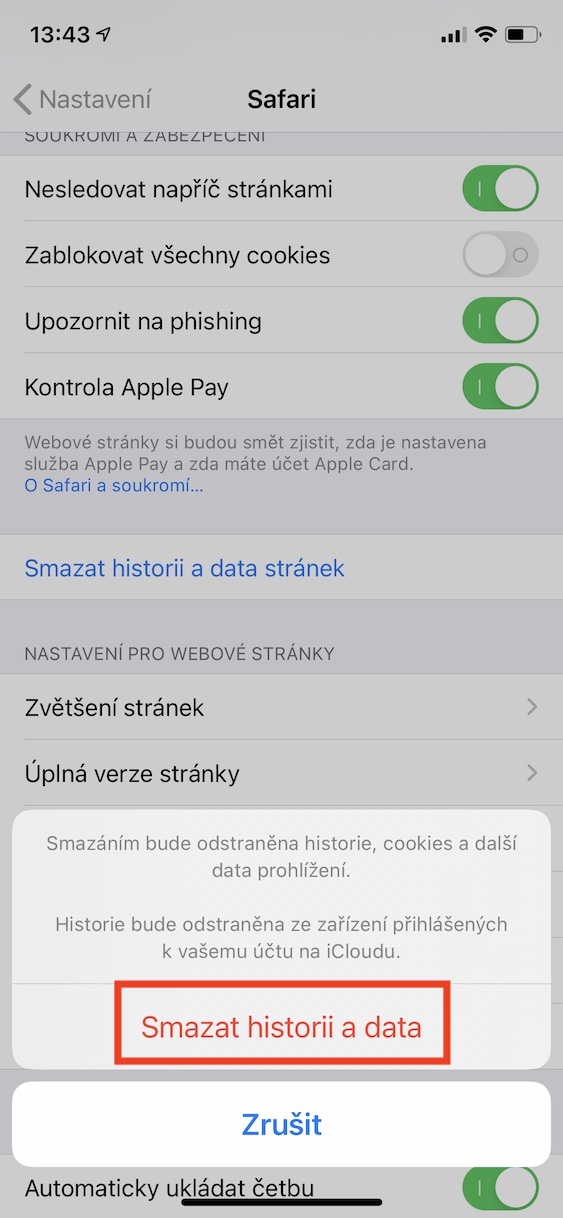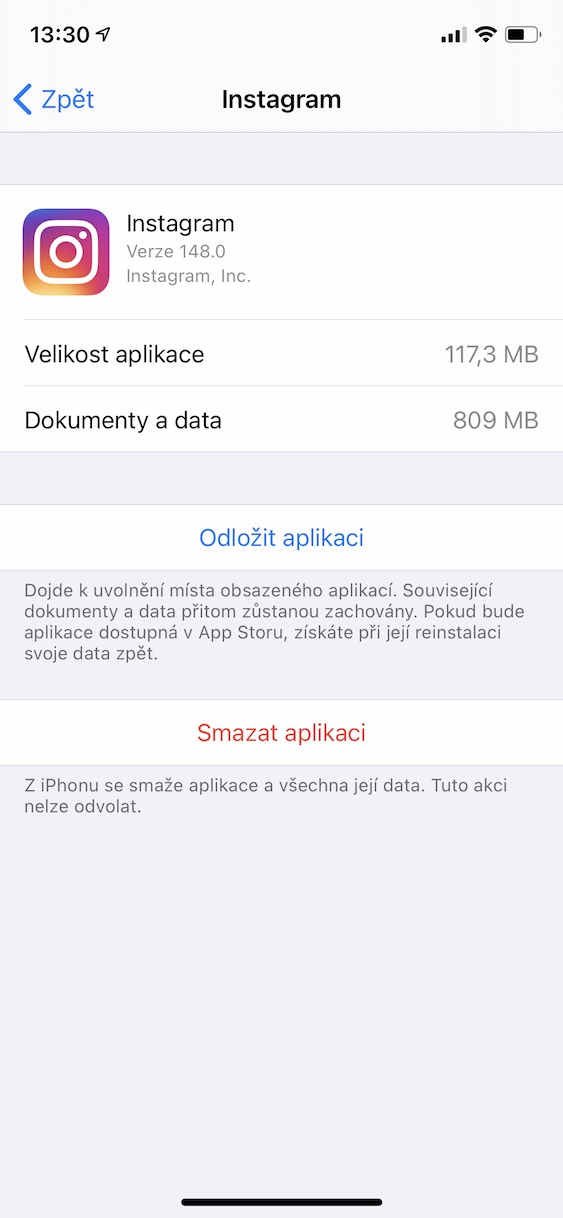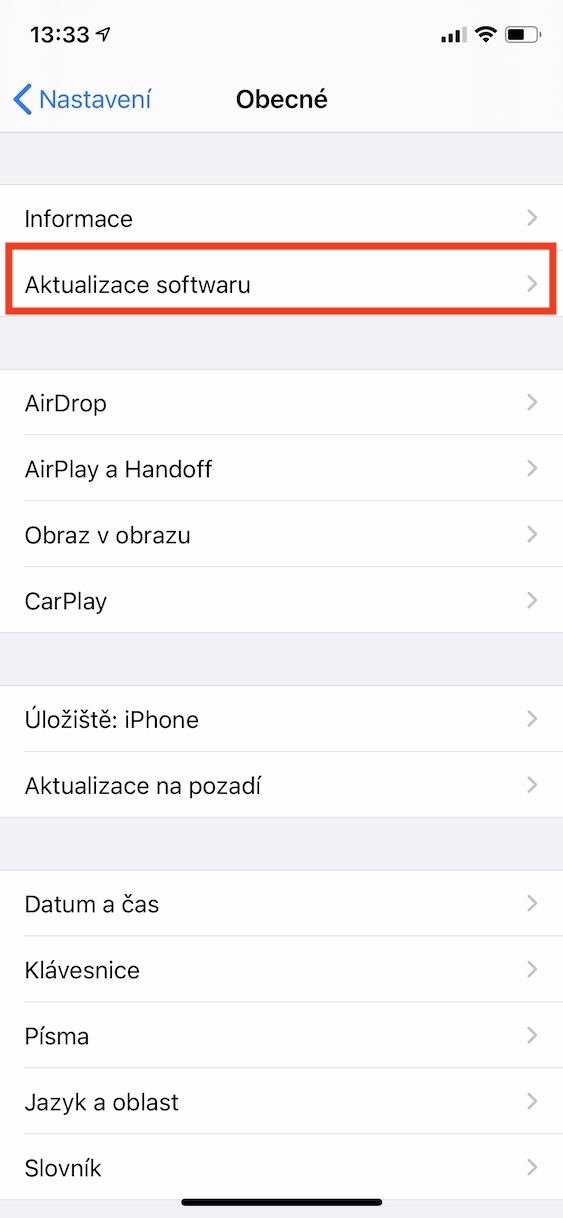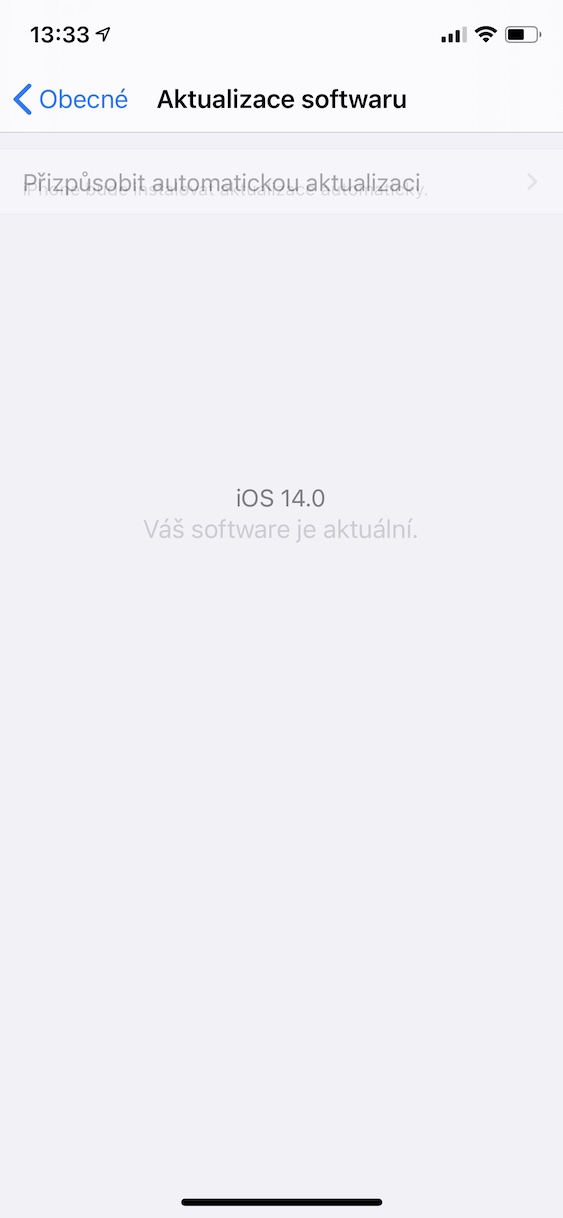Since the release of the first version of Apple's phone, iPhones have not been expandable with a memory card, and although we can now connect external drives or buy special flash drives, it is by no means an ideal solution for everyone. In addition, versions with higher storage capacity are not affordable, and not everyone can afford to subscribe to cloud space. Fortunately, there are a few tricks to free up storage for you.
It could be interest you
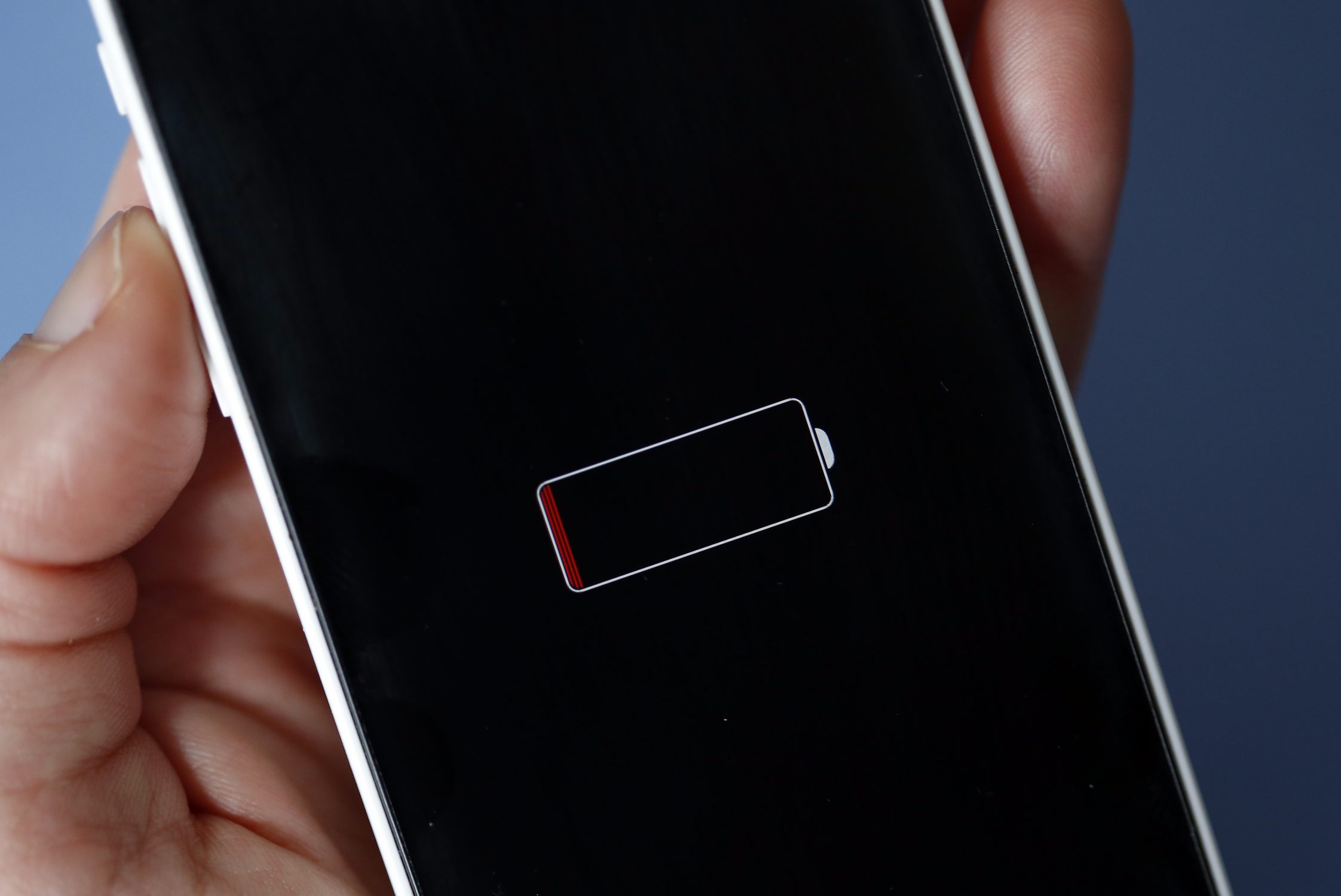
Postpone applications
iPhones and iPads offers a function that will remove unused applications from the device, but the data from them will be preserved. If you want to activate this feature, you have two options. Either open Settings, click on the section in it In general and get off below, where to select Storage: iPhone. Turn it on switch Put away unused and this activates the function. But you can't disable it in this setting - if you want to disable the Snooze Unused feature, you can do so in Settings -> your profile -> iTunes and App Store -> Snooze unused.
Deleting site history from web browsers
Websites don't take up a lot of space, but large amounts of data can accumulate and fill up quite a bit of storage space. To delete data in the native Safari browser, open Settings, click on Safari and then on Delete site history and data. The history will be deleted from all your devices signed in to iCloud. If you also use other browsers, the option to delete the history is usually found in the settings of individual applications.
Optimizing photos and videos
As a rule, photos and videos take up a large part of the storage, which is of course understandable. However, when using iCloud, you can back up multimedia, i.e. have the original version stored on iCloud and only the lower quality version on the phone. To turn it on, go to Settings, move to the section Fotky a activate switch Photos on iCloud. Next, just tap on Optimize storage, and from now on, full resolution photos and videos will only be stored on iCloud when space is low.
Checking the amount of data for individual applications
It's not unusual for some apps to cache large amounts of data. In my experience this is OneDrive for example - when uploading a 5GB file I was able to upload it for the third time, but 15GB of data was cached (3 x 5GB). To check app data, open Settings, select a section In general and then Storage: iPhone. If you find that an application, or the data from it, is taking up an unusually large amount of space, try to examine the application's settings, whether there is an option to clear the cache, or whether you have accidentally downloaded some unnecessary files. Sometimes it also helps, as for example with OneDrive, to uninstall and reinstall the application.
Update to the latest software
Sometimes there may be an unexpected bug in the software version you are using, which causes less space on your device. In addition, if you have downloaded the update but not yet installed it, it also takes up space on your smartphone. Most of you probably know how to update an iPhone or iPad, but for the less advanced, we will remind you of the procedure. Move to Settings, unclick In general and click here Software update. Then only the software is enough install and everything is done.



